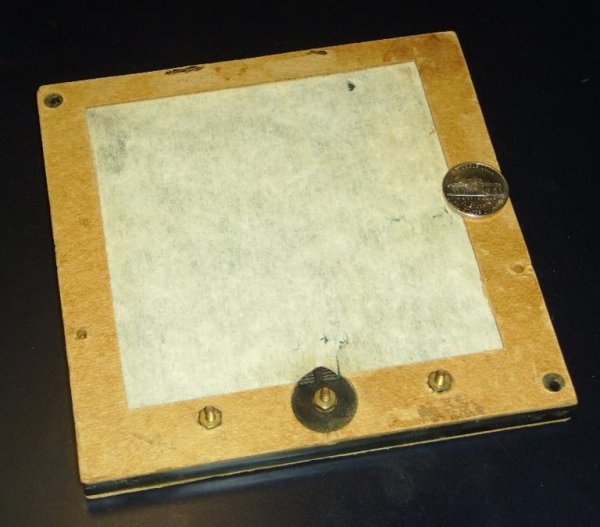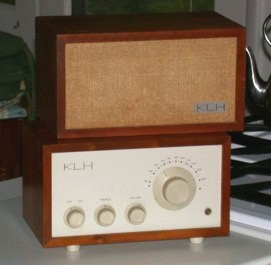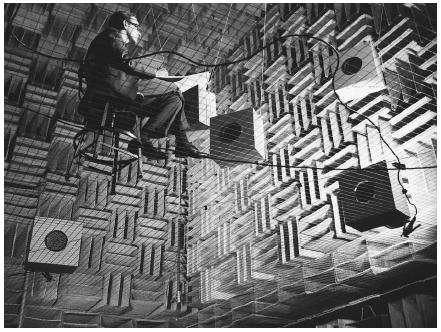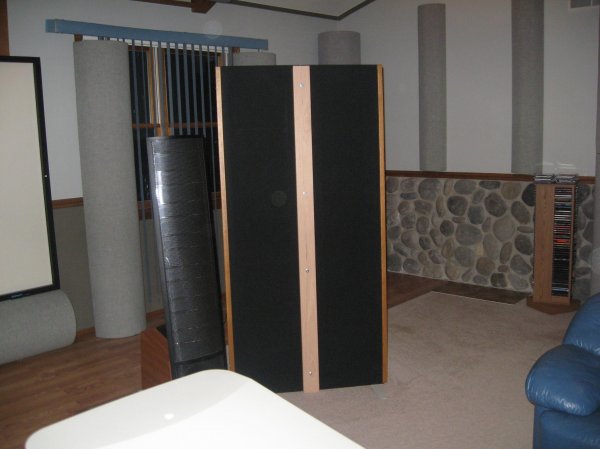Gigantic point source?
Thanks, George. Perhaps more accurately than saying KLH Nines are point sources, especially considering their size, I should say, they operate not as line arrays. I did not want to seem as contentious as I really am by putting it that way, in view of a statement I noticed somewhere that ESL's are all line sources, but what I said instead about the Nine in particular was not exactly true. I shall try to put this to rest by simply describing the KLH Nine as briefly as I can.
The KLH Nine is a two-way speaker. The crossover is at about 800 Hz.
Shown in your posting is one of the woofer panels. There are ten of these in each speaker, creating a 24" x 66" woofer array that does not have a high enough aspect ratio to operate as a line source.
There is also a single tweeter to one side, with its center 44" above the floor (photo of tweeter attached with a U.S. nickel coin as a size reference). The tweeter's radiating area measures about 4" x 4", which is relatively large, so its sound is rather directional, but still, I think it can be said to operate as a point source.
Put together, in the very near field, the Nine can be considered a plane source, and in the very far field, a "point" source, albeit a large one. In-room, one is generally situated in the mid-field, and when the speakers are aimed as intended, and not at the listening position, the sound is distributed by room boundaries in such a way that that the listener experiences an unusual combination of plane, point, and diffuse sources. The effect is interesting, engaging and much like live.
Thanks, George. Perhaps more accurately than saying KLH Nines are point sources, especially considering their size, I should say, they operate not as line arrays. I did not want to seem as contentious as I really am by putting it that way, in view of a statement I noticed somewhere that ESL's are all line sources, but what I said instead about the Nine in particular was not exactly true. I shall try to put this to rest by simply describing the KLH Nine as briefly as I can.
The KLH Nine is a two-way speaker. The crossover is at about 800 Hz.
Shown in your posting is one of the woofer panels. There are ten of these in each speaker, creating a 24" x 66" woofer array that does not have a high enough aspect ratio to operate as a line source.
There is also a single tweeter to one side, with its center 44" above the floor (photo of tweeter attached with a U.S. nickel coin as a size reference). The tweeter's radiating area measures about 4" x 4", which is relatively large, so its sound is rather directional, but still, I think it can be said to operate as a point source.
Put together, in the very near field, the Nine can be considered a plane source, and in the very far field, a "point" source, albeit a large one. In-room, one is generally situated in the mid-field, and when the speakers are aimed as intended, and not at the listening position, the sound is distributed by room boundaries in such a way that that the listener experiences an unusual combination of plane, point, and diffuse sources. The effect is interesting, engaging and much like live.








